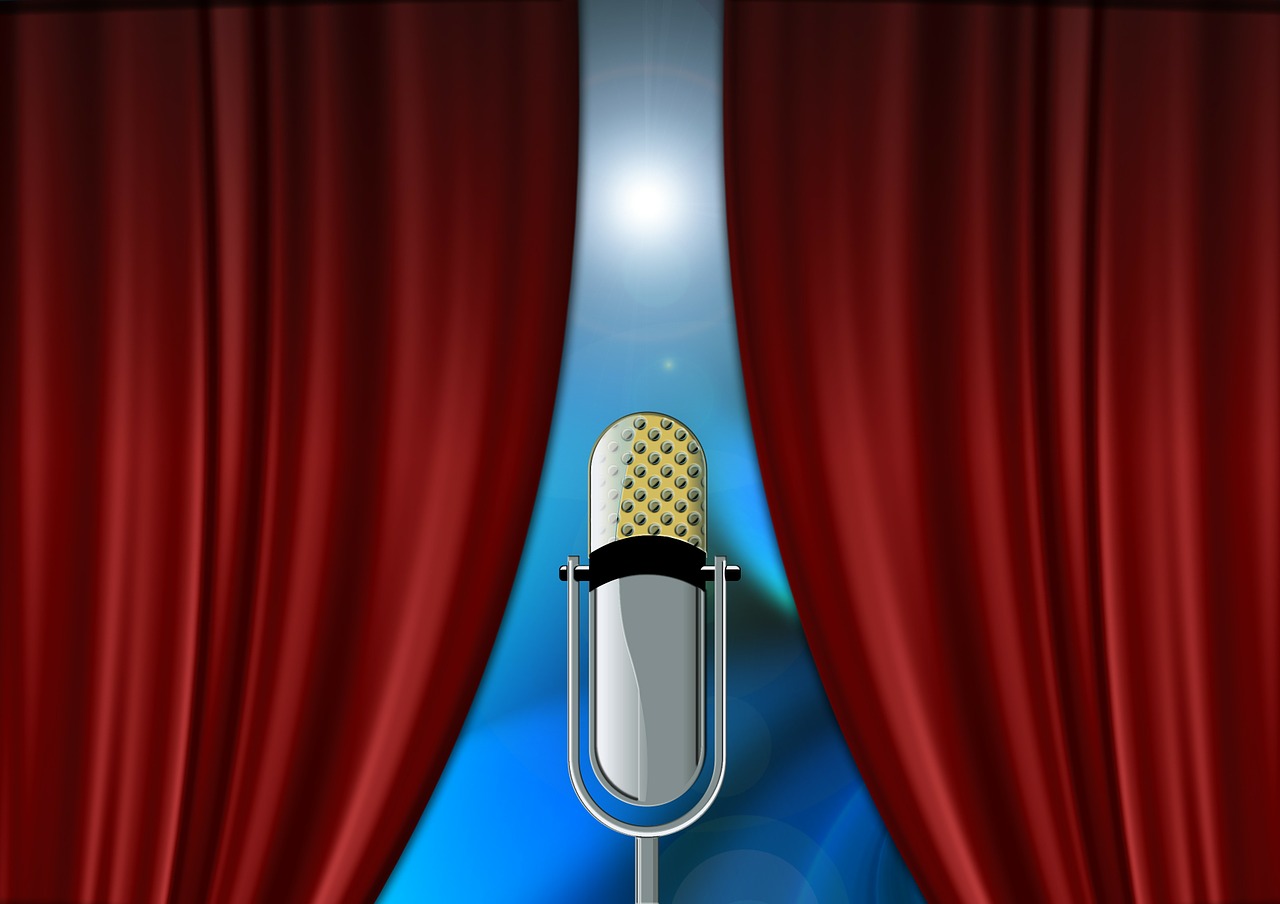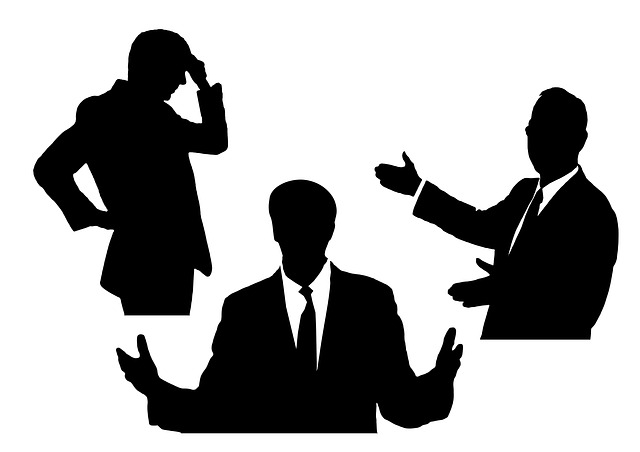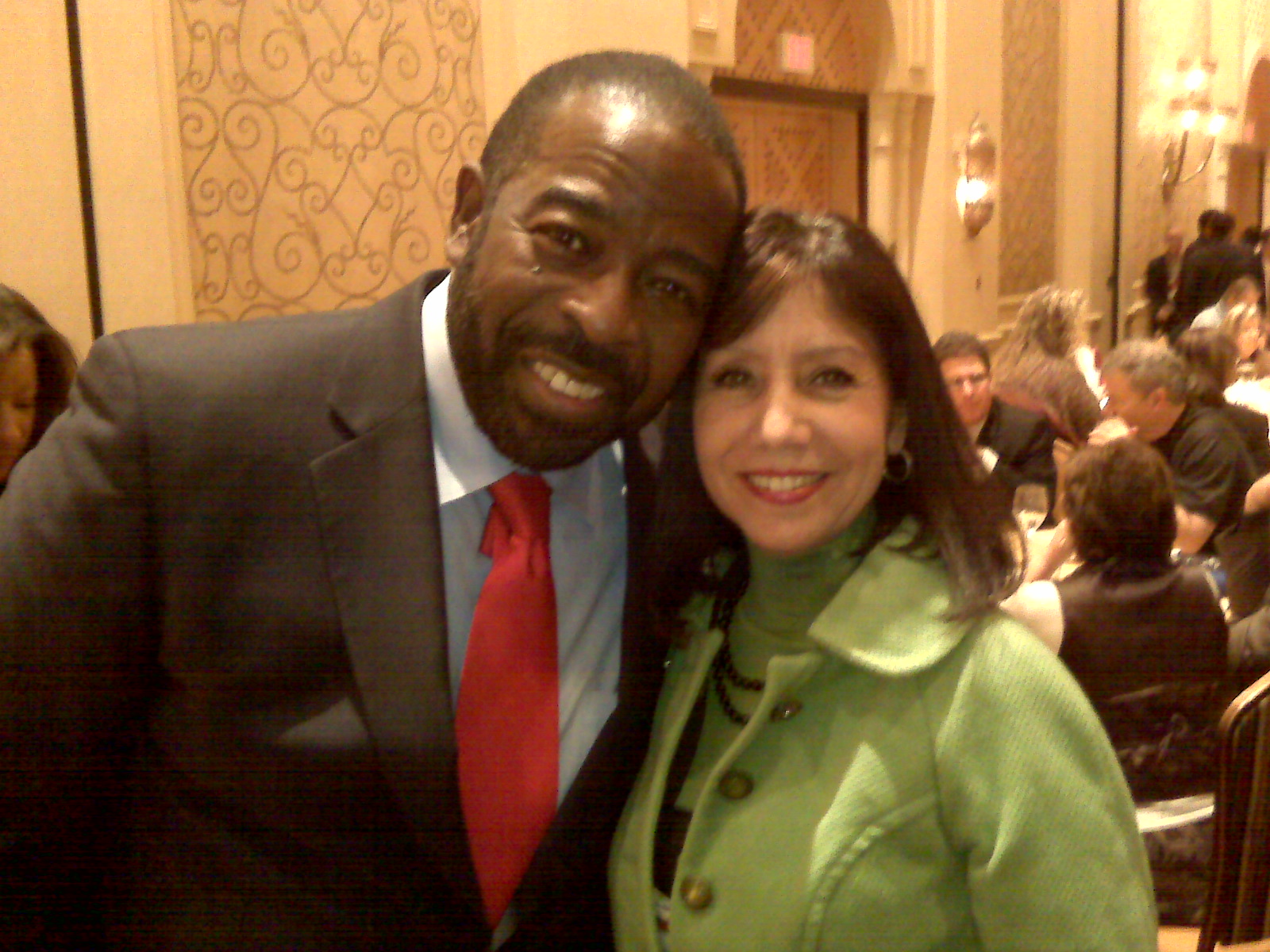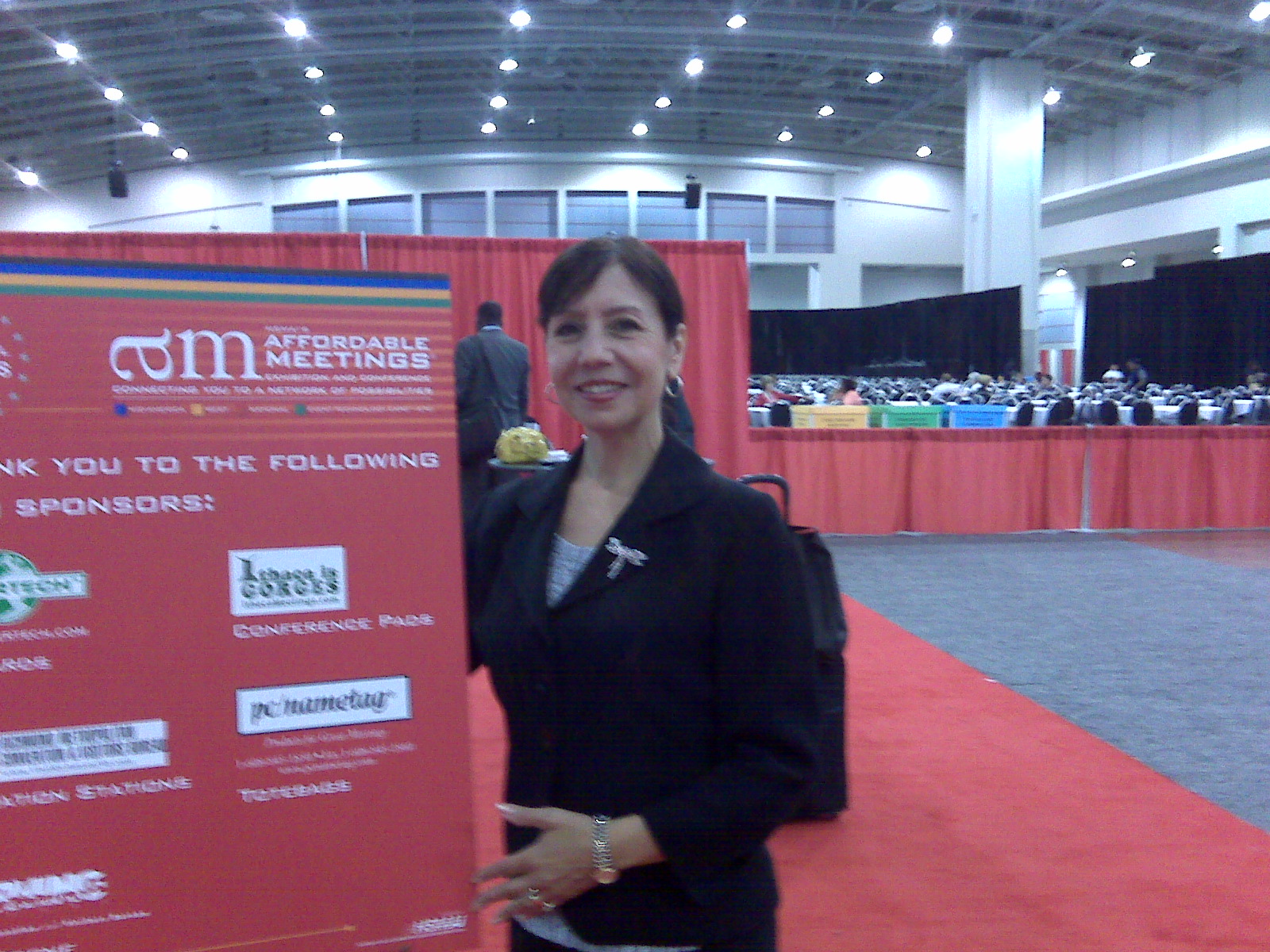Get your audience to like you!
It's World Voice Day - Do You Have a Voice?
 Do you have a voice? Voice matters. Everyone has a right to express their voice. But you can't do that if you've lost your voice. It's World Voice Day,
a day dedicated to the care of the voice. You use your voice everyday and vocal misuse and abuse are not uncommon. Follow these tips for a healthy voice.
Do you have a voice? Voice matters. Everyone has a right to express their voice. But you can't do that if you've lost your voice. It's World Voice Day,
a day dedicated to the care of the voice. You use your voice everyday and vocal misuse and abuse are not uncommon. Follow these tips for a healthy voice.
Vocal Hygiene Tips
- Don't struggle to speak above loud noises.
- Avoid dairy products 24 hours before a long speech.
- Use abdominal breathing.
- Read more vocal hygiene tips here.
Avoid Vocal Fry
Vocal fry is a phenomenon that is taking off around the nation. Watch my interview with Nancy Redd on HuffPost Live to hear what it sounds like:
Even NPR broadcasters have fallen victim to vocal fry. Recently, they reported that they have received a fair amount of hate mail about the young women on their staff using vocal fry. Ira Glass investigates: If You Don't Have Anything Nice to Say, SAY IT IN ALL CAPS
Don't Use Uptalk
Uptalk is another vocal phenomenon that robs the speaker of his power. What is uptalk? It's when the speaker uses a rising inflection at the end of their sentence so it sounds like a question. Watch my video to hear it and to learn why it's spreading.
Women Need To Speak Up
World Voice Day is a perfect time to revisit the importance of women speaking up so they are heard. Some women speak in a breathy voice, and are too soft spoken. Uptalk and vocal fry get in the way of effective self expression.
Are you guilty of hindering your own communication? Ask a buddy to listen to you speak. Are you using uptalk, vocal fry, or a breathy, soft voice? Have your friend tell you when you do it so you can learn to stop it. Just make sure it's someone who will be honest with you!
Press Release: Diane DiResta Shows Women How to Speak Your Way to Success
Diane DiResta spoke at the Ellevate Newtork’s recent workshop, Speak Your Way To Success: Public Speaking Workshop, on Wednesday, April 14th, 2015. Public speaking is the new competitive advantage. Avoiding this critical skill is committing career suicide.
Here's Johnny... How to Introduce a Public Speaker
 Your biggest worry isn't your presentation or your entrance. Your worst nightmare is the person who is introducing you. When the Johnny Carson show was on the air, Carson had a sidekick named Ed McMahon. His job was to introduce Johnny Carson at the beginning of the show. McMahon would say in a melodious tone, "Heeeere's Johnny!" It became his signature line as the audience would eagerly await to hear it in every show. They made a good team.
But what about your team? Who is introducing you?
Your biggest worry isn't your presentation or your entrance. Your worst nightmare is the person who is introducing you. When the Johnny Carson show was on the air, Carson had a sidekick named Ed McMahon. His job was to introduce Johnny Carson at the beginning of the show. McMahon would say in a melodious tone, "Heeeere's Johnny!" It became his signature line as the audience would eagerly await to hear it in every show. They made a good team.
But what about your team? Who is introducing you?
If you're giving a presentation, it's normal to have a few butterflies in your stomach. Most public speakers research, prepare, and practice their presentation. Some public speakers hire a coach. Yet, they give little thought about who is introducing them. This is the elephant in the room that nobody is talking about.
I once had a woman introduce me who sounded like she was reading a newspaper. She was so dispassionate that you could feel the energy leave the room. It made my job harder to get some excitement going.
The speaker introduction is your warm up act. Entertainers understand this. A rock star always has a warm-up band. Comedians know the power of a good emcee. The job of the introducer is to excite and engage the crowd so they'll be ready for the main act. YOU are the main act and that means you need to take charge on two levels.
First, choose your introducer carefully. It must be somebody who has good platform skills and enjoys speaking. Second, you need to write your own introduction. Most presenters send their biography to the introducer. A biography is not an introduction. Listening to a resume is boring! So here is a formula you can use to create your speaker introduction. The formula is T.E.P.S.
Topic - Begin by announcing the topic. This answers the question, "Why are we here?" or "Am I in the right meeting?" The topic creates focus. You can begin by asking 3 questions, or lead in with a thought-provoking statistic.
Expertise - Then launch into the speaker's credentials but don't list every research paper or degree. Present the top achievements that have the most relevance to the audience and that establish the public speaker's credibility. It answers the question, "How have you earned the right to be here?"
Personal - Here is where you bring in something about the person that humanizes them. It answers the question, "Do I like the speaker?" or "Who are you as a person?" This is an opportunity to add some humor or a quick anecdote. Be sure to get permission before you share anything personal.
Speaker's name - Always end with the speaker's name. "Please help me welcome, John Doe..." People remember the last thing they hear.
Public speaking is not rocket science but it does require planning and skill. The next time you give a presentation, choose your introducer, write your own introduction, and coach them on how you want that introduction delivered. Now you're ready to take center stage and give a knockout presentation.
Do you have a great speaker introduction you'd like to share?
Public Speaking: Does Sizzle Matter More Than The Steak?
 What's more important? Style or Substance? Sizzle or Steak? I ask this question in my public speaking and presentation seminars. The class is usually divided but they vote more often for the sizzle. It makes sense. Before people can hear your content, you have to get their attention. In order to keep their attention you need to engage them.
We all know public speakers who have a message that matters, but because they have poor delivery skills, they lose their audience. The message doesn't get through.
What's more important? Style or Substance? Sizzle or Steak? I ask this question in my public speaking and presentation seminars. The class is usually divided but they vote more often for the sizzle. It makes sense. Before people can hear your content, you have to get their attention. In order to keep their attention you need to engage them.
We all know public speakers who have a message that matters, but because they have poor delivery skills, they lose their audience. The message doesn't get through.
Public speakers who have excellent presentation skills know how to attract and charm an audience. And that's why some public speakers with weak substance get higher marks.
This TEDx presenter and comedian humorously demonstrates how good public speaking techniques can make him sound intelligent even in the absence of content!
How to Make Your Audience Listen When Public Speaking
![By Wikimania2009 Beatrice Murch (originally posted to Flickr as Audience) [CC BY 2.0 or CC BY 3.0], via Wikimedia Commons](http://static1.squarespace.com/static/584471bcd2b857fe8823846d/584aee108eaa8960076ec201/584aee288eaa8960076ec54a/1481305640928/Audience_-_Stallmans_pre-Wikimania_2009_talk_-_Wikimania_2009.jpg?format=original) Does your audience tune out? Do you have trouble keeping them engaged? It's challenging enough to get the attention of one listener. It's even harder to command a large audience. With less time to do more, competing priorities and so much incoming data, most audiences are on sensory overload. It's no wonder people are on their smart phones instead of listening to you.
How can you grab attention in an A.D.D. world?
Does your audience tune out? Do you have trouble keeping them engaged? It's challenging enough to get the attention of one listener. It's even harder to command a large audience. With less time to do more, competing priorities and so much incoming data, most audiences are on sensory overload. It's no wonder people are on their smart phones instead of listening to you.
How can you grab attention in an A.D.D. world?
Here are 3 simple tips to get any audience to listen to you: Provoke, Evoke, Poke.
Provoke. Are you delivering the same old same old? A professional speaker shared a recent experience he had with his audience. During the beginning of his presentation he looked out on a group actively engaged with their phones. A few minutes later he noticed heads starting to bob up. Then they put their phones down and started to listen. Apparently he had said something that got their attention. Step one is to provoke the audience by delivering new information, controversial content or something that is thought provoking. It doesn't have to be cutting edge but it should be something that makes them think. How can you say something in a new way? How can you connect the dots in a way that they haven't heard before?
Evoke. Beyond thought provoking content, strive to evoke an emotional response. The best way to trigger an emotional experience is through stories and humor. Help the audience experience a feeling as you take them through a journey of highs and lows. When information is anchored to an emotion, the message sticks. Think of a moment of crisis. Most people can remember where they were during the 911 attack in New York City. What will evoke an emotion in your audience? Try showing a motivational video clip or a funny cartoon. I remember watching a video of a woman who was confined to a wheel chair who took took her first skydive jump strapped to the instructor. There wasn't a dry eye in the house. Whenever there is strong emotion, the audience will be engaged.
Poke. Another way to get your audience to listen is to poke them physically. Get them out of their heads and into their bodies. Invite them to enter the world of activity. Most audience members expect to sit back and be lectured. Don't spoon feed them. Make them part of the presentation. It can be as simple as asking them to repeat a refrain. Repetition is powerful. Ask them to stand and turn toward their partner. Let them participate in a poll. One speaker would sporadically flash a slide of a fish. Whenever they saw the fish, the group was expected to do a clapping rhythm the speaker taught them. Their eyes were glued to the screen as they eagerly anticipated the flashing fish.
And if getting them away from their phones is like taking away Linus' blanket, follow this old adage: If you can't beat 'em, join 'em. I project hashtags for my presentations, along with my twitter handle and ask them to tweet. It causes the audience to listen and you also get social media klout.
The most important question is: Are you listening to the audience? March is Listening Awareness month. Remember to listen.
Speaking Internationally
Diane shares her experiences speaking internationally and imparts hard-earned wisdom. Are you speaking internationally? Don't miss these tips!
Savvy Central Radio Interview - Are you Asking for What you are Worth?
Christina Nitschmann of Savvy Central Radio recently interviewed me on the subject of asking for what you are worth. Here is the full interview - enjoy!
The 1 Non-Verbal Presentation That Can Disarm Your Audience
 I entered the office building in anticipation of meeting a prospect. The first person I saw was the receptionist. Usually, a receptionist will say, "May I help you?" But this receptionist stood out. She did something that made her immediately attractive and memorable. Without saying a word, she conveyed, "Welcome, I'm happy to see you". She did this with a smile. No, not an ordinary quick flash of the teeth.She was beaming. It was a genuine, happy smile. She smiled with her mouth and her eyes. It was so disarming that I complimented her on her welcoming gesture. Her facial expression communicated that she liked her job and that she liked people.
This receptionist didn't know she was giving a presentation that morning. We think of public speaking as speaking words. But non-verbal communication is more than half the message. A public speaker can have the best written speech but if the delivery doesn't match the content, there is a disconnect. The top public speakers align the body, voice, and words. And that begins with a smile.
I entered the office building in anticipation of meeting a prospect. The first person I saw was the receptionist. Usually, a receptionist will say, "May I help you?" But this receptionist stood out. She did something that made her immediately attractive and memorable. Without saying a word, she conveyed, "Welcome, I'm happy to see you". She did this with a smile. No, not an ordinary quick flash of the teeth.She was beaming. It was a genuine, happy smile. She smiled with her mouth and her eyes. It was so disarming that I complimented her on her welcoming gesture. Her facial expression communicated that she liked her job and that she liked people.
This receptionist didn't know she was giving a presentation that morning. We think of public speaking as speaking words. But non-verbal communication is more than half the message. A public speaker can have the best written speech but if the delivery doesn't match the content, there is a disconnect. The top public speakers align the body, voice, and words. And that begins with a smile.
A smile is the quickest way to relax your audience and to calm your nerves. Some studies say it takes 43 muscles to frown and only 17 to smile. So it takes less effort to smile. If the fear of public speaking causes you to freeze up, you can choose to smile anyway. The brain releases endorphins when you smile, making you feel good. Nothing says "confidence" better than a smile. Psychology studies have proven the power of a smile. In one experiment they asked participants to hold a pencil between their teeth which forced them to smile. The participants reported feeling happier.even though it was a forced smile. (I tried it. It works).
So don't be a facial monotone. The next time you approach the public speaking platform, step up and smile!
Speak from the Heart
 What does Valentine's Day have to do with public speaking? It's all about giving out hearts. On February 14th we give out chocolate hearts but public speakers give their emotional hearts.
What is speaking from the heart? It's about being real, speaking with genuine feeling, sharing emotions and telling your story. In the workplace, most people speak from the head. They offer a lot of facts and figures but their presentations may soon be forgotten. That's because people are moved to action by feelings, not by facts.
What does Valentine's Day have to do with public speaking? It's all about giving out hearts. On February 14th we give out chocolate hearts but public speakers give their emotional hearts.
What is speaking from the heart? It's about being real, speaking with genuine feeling, sharing emotions and telling your story. In the workplace, most people speak from the head. They offer a lot of facts and figures but their presentations may soon be forgotten. That's because people are moved to action by feelings, not by facts.
Why talk from the heart? You'll feel happier and more relaxed because you're being yourself. It takes a lot of energy to hide behind a mask of perfection. The audience will be more engaged when you open up communication. When they feel your heart, they get in touch with their own hearts. As Marianne Williamson wrote, "As we are liberated from our own fear, our presence automatically liberates others." And that emotional connection makes you more memorable.
How can you talk from the heart in the workplace without losing credibility? Talking from the heart is not about getting carried away by emotions. It's about being passionate, using humor, and sharing your successes and challenges so the audience can relate to your humanity.
Recently, a health care company's data base was hacked. Here is what the CEO said in the email: "Our own associates’ personal information – including my own – was accessed during this security breach. We join you in your concern and frustration, and I assure you that we are working around the clock to do everything we can to further secure your data." The personal reference made the message more heartfelt.
When a leader speaks from the heart, taking the audience on a journey through the peaks and valleys, it humanizes that speaker. When hearts are touched, perfect presentation skills become secondary. The audience doesn't remember the performance, they remember you.
Provide high value content and speak from the heart.That is the very best presentation. As Nelson Mandela said,
"A good head and a good heart are always a formidable combination ."
How to Speak to an Audience with the Attention Span of a Gnat
 When I first started out as a stand up trainer working with sales groups, I heard a piece of advice. The senior facilitator told me that sales people “don’t seminar well.' I quickly learned what that meant. Sales representatives would start drumming their fingers and tapping their feet. They didn't like sitting still.
Fast forward to today and the foot tapping has been replaced by keyboarding and reading smart phones. It’s no longer sales people who are tuning out. It's everybody. We’re living in an A.D.D world. Video ads move more quickly with the best ads changing frames every 4 seconds. So how do you capture an audience with the attention span of a gnat?
When I first started out as a stand up trainer working with sales groups, I heard a piece of advice. The senior facilitator told me that sales people “don’t seminar well.' I quickly learned what that meant. Sales representatives would start drumming their fingers and tapping their feet. They didn't like sitting still.
Fast forward to today and the foot tapping has been replaced by keyboarding and reading smart phones. It’s no longer sales people who are tuning out. It's everybody. We’re living in an A.D.D world. Video ads move more quickly with the best ads changing frames every 4 seconds. So how do you capture an audience with the attention span of a gnat?
Hook. Grab attention from the very beginning with a hook and a promise. Lead with an opening question, statement or story that speaks to their pain points or deepest desires. They don’t care about you or your lengthy bio. Take care of the credibility piece with a brief introduction and then hit the ground running. Speak to their self interests.
Ignite Interest. Tell them something they don’t know and share your wisdom. Information is free and plentiful but wisdom is at a premium. Pique their curiosity. What have you learned from the trenches? Connect the dots for them. Explain how your message impacts their world and they will continue to listen.
Engage. The days of the talking head are over. Adults want to be involved and engaged. Getting an audience physically and mentally involved is the secret to keeping them with you. Take them on a journey through storytelling to create an experience. Have them repeat a phrase. Ask for a show of hands. Engage in polling software. Call for a volunteer. Create a paired exercise. Effective public speaking is about engagement.
Keep it Moving. More than ever before, a slow paced lecture will cause people to check out. A great public speaker keeps an active pace and keeps changing it up. Show a slide, share an anecdote, pose a question.
The brain cannot sustain attention indefintely. It drifts in and out. To keep the audience with you, keep it moving. A rule of thumb in the training world is to change something every seven minutes. For a speech, it may require more frequent changes. Great speakers pick up the pace and keep the momentum going.
Passion. It’s easy to mentally dismiss a dispassionate public speaker but it’s harder to disengage from a passionate presenter. Keep stoking the fire in your belly. Find the parts of your talk that most excite you and speak from that place. Don’t be afraid you’ll over do it. You won’t. Enthusiasm is contagious and the audience will want to engage with your energy.
If You Can’t Beat ‘Em, Join ‘Em. For those diehards whose hands are attached to their smart phones, invite them to tweet. I now start most of my talks with my twitter handle, @speakingpro.
They may be listening with their thumbs but at least they’re engaged.
Move the Masses: 3 Speaking Lessons from Martin Luther King
What if you could speak like Martin Luther King? Not everybody will move the masses with their oratory but here is what I've observed- Gifted speakers are born but effective speakers are made. Martin Luther King was one of the most gifted public speakers. But even he studied to master his craft. He developed the ability to move the masses with his mouth. Great leaders in history learned the power of the spoken word and became masters of the tongue. Most of us will not sway the masses but we can inspire and persuade our circle of influence by taking a lesson from Martin Luther King. Here are three techniques he used throughout his speeches to inspire his audience.
Vision. All good speeches start with a vision. Before you begin writing, imagine your ultimate goal. What is your intention? What do you want the audience to see, hear, and feel as a result of your talk? They should be in a better place by the end of your presentation. If they can't see it, they won't follow.
Alliteration. Martin Luther King made good use of rhetorical techniques such as storytelling, metaphor (promised land), (mountain top), and alliteration to inspire the crowds. His famous line "I look to a day when people will not be judged by the color of their skin, but by the content of their character" is frequently quoted by many. Alliteration makes the message memorable.
Passion. The best speech writing is not a substitute for dispassionate delivery. If you sound like you're reading text, you will inspire nobody. Great speakers have a fire in their belly. It's the emotion that moves an audience. So tap into your feelings and talk from the heart. The key word in emotion is motion. When the audience feels the emotion and it's backed up with logic you will move them to action.
Three Speaking Resolutions You Must Keep in 2015
 It's January 15th. Have you broken your resolutions already? In 2015, the bar has been raised. The world is watching TED Talks and TED has become the standard for all presentations and public speaking. If you want your career to soar, you'll need to play a bigger game. That means your speaking has to make an impact. Your speaking must inspire and influence.
It's January 15th. Have you broken your resolutions already? In 2015, the bar has been raised. The world is watching TED Talks and TED has become the standard for all presentations and public speaking. If you want your career to soar, you'll need to play a bigger game. That means your speaking has to make an impact. Your speaking must inspire and influence.
Let's take a page from Aristotle who revealed the secret of persuasion: Ethos, Pathos, and Logos.
Ethos refers to trustworthiness, character, or reputation.
Pathos relates to emotions. It's how to empathize with the feelings of the listener; to invoke their imagination.
Logos is persuading through data, logic, or reasoning.
How does this relate to TED Talks? Analysis revealed that these presentations were:
65% pathos or emotions 25% logos or data 10% ethos or credibility.
Most TED speakers relied heavily on storytelling. Yet most other presentations are heavy on data and low on stories. Here are three resolutions that are guaranteed to catapult your speaking skills.
Resolve to Deliver More Stories. For 2015 the best speakers will be the best storytellers. The old saying applies: "They don't care how much you know until they know how much you care." First make a human connection before you present your data. Lead with a story, support it with data.
Resolve to Use the Rule of Three. When presenting data, use the Rule of Three. TED talks are 18 to 20 minutes. The brain tunes out for longer than 20 minutes. People can easily remember three big ideas or concepts - Just Do It, Yes We Can, Ready, Set, Go.
Resolve to Be Memorable. TED presenters think visually. You won't see slides crowded with text and numbers. Instead, you'll see pictures. Steve Jobs was the master of one picture per slide. The audience will remember 20% of what they hear and will retain 70-85% of what they see. This is supported by research from 3M, Wharton School of Business, and University of Michigan.
One of the best ways to be memorable is deliver something new and do the unexpected.
Let 2015 be the year that you talk like TED. Tell more stories, use the rule of three, be memorable. These are three resolutions you need to keep to get to the next level, earn more, gain influence, and to rock your speech.
Elevator Speech - 60 Second Pitch
Diane explains how to craft a compelling 60 second pitch using the four C's. Watch her put it together in her own elevator speech!
If You're Not Speaking With Power and Confidence...
In this inaugural podcast episode, Diane DiResta introduces the importance of confident communication and how she helps professionals to speak with confidence, shine in the media, and present their brand in the best possible light. Diane DiResta is a renowned International speaker, consultant and executive speaking strategist. Her book, 'Knockout Presentations: How to Deliver Your Message with Power, Punch and Pizzazz', has been called "The Bible of Public Speaking". Her new eBook is called, 'Give Fear the Finger.'
Rolando Blackman, former NY Knick, calls Diane's knowledge "... absolutely tremendous!"
Subscribe (iTunes coming soon | RSS) to Diane's podcast and begin to improve your public speaking skills!




